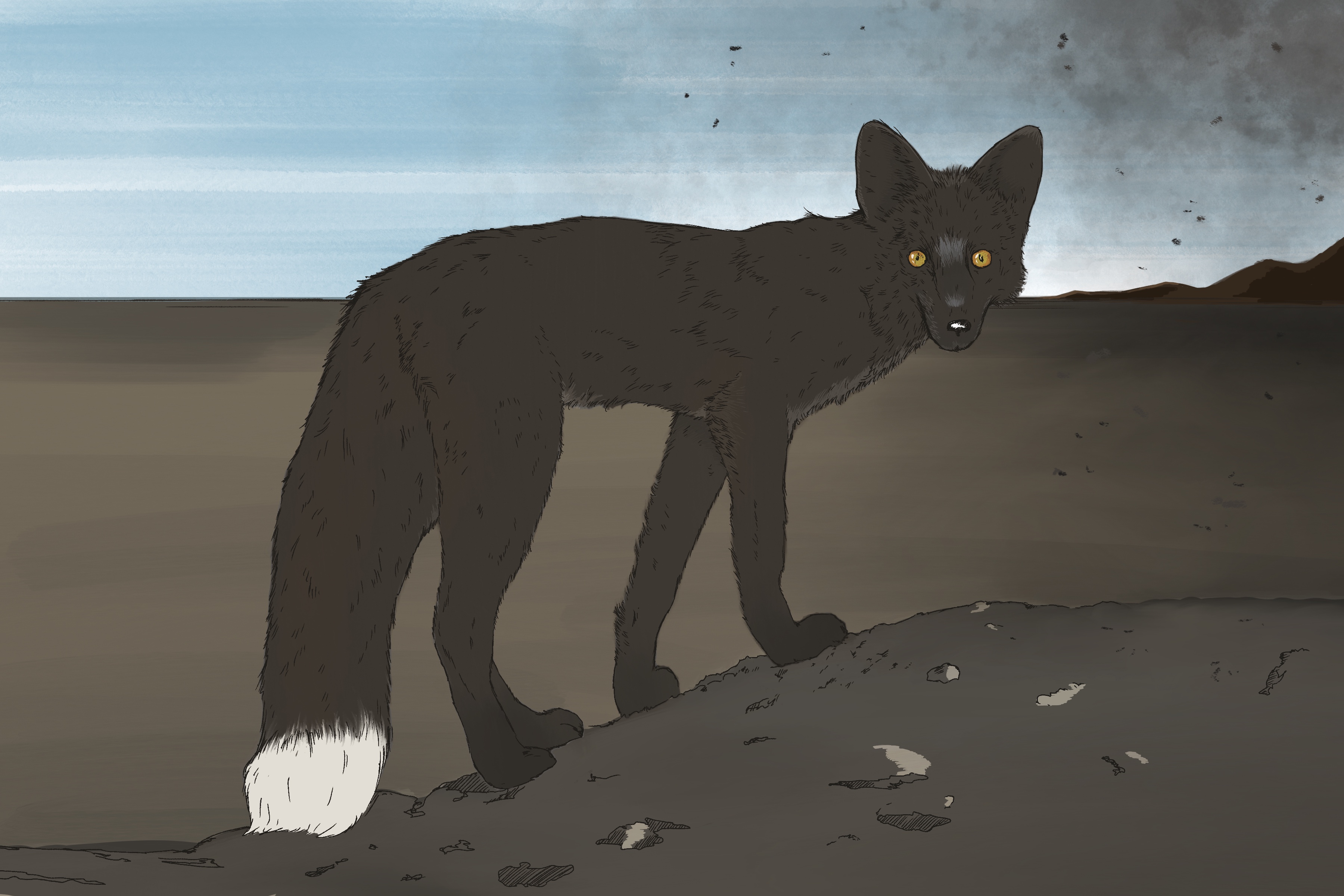Ash Fox
Vulpes Nigrum
Far off the northeastern mainland of Allegri and throughout the coastal islands known as the Black Ash Islands there many familiar looking animals with odd physical peculiarities that set them apart from their mainland kin. One such beast is the Ash Fox. Evolved to survive in cold and dark surrounding, these vulpines have predominantly grey or black fur and have adapted their diet and hunting practices to thrive not only as scavengers but as one of the largest predatory mammals on the islands.
Basic Information
Anatomy
On first glance the ash fox appears to simply be an evolved phenotype of the red fox breed. However, on examination there are several subtle deviations beyond the appearance that distinguish these vulpes as truly unique among their species.
Body Tint, Coloration, and Markings
Something that obviously stands out is the ashy grey or black coat that protects these foxes from the weather and allows them to blend with their surroundings. Mainland breeds have reddish or yellow-grey coats during summer but the ash fox has no seasonal transition and is much darker than even the most grey-furred fox from Allegri.
Skull, Jaws, and Teeth
Watching an ash fox in the wild it's difficult to tell, but the shape of their skulls is narrower and has a longer snout on average than a mainland fox. It's adapted to be able to reach further into the burrows and holes it hunts for small mammals and vermin. Another adaptation is the molar-like teeth at the back of their jaws. Flatter and more solid than most other omnivoires, these teeth break down food more thoroughly than is necessary elsewhere but on the Ash Islands there is rock and dirt in everything and being able to break up loose stone or even small bones helps prevent blockages in the throat and bowels.
Dietary Needs and Habits
Although they survive on nearly anything they can get their jaws around, the ash fox generally predate on smaller mammals or will steal from larger predators in the vicinity. They dig under trees and bushes for burrowing creatures such as mice and voles but will also gnaw at the root systems of larger vegetation for water if it's scarce.

Lifespan
5 years
Average Height
50cm
Average Weight
12kg
Average Length
1.2m


Comments